Forests and the renewable products derived from them can reduce reliance on non-renewable resources (which currently account for around 70 percent of all material demand)226 while also supporting livelihoods and rural economies. Reversing the trend of increasing material extraction while promoting sustainable consumption and production patterns is essential for achieving the SDGs.
Opportunities exist for sustainably sourced wood to substitute for a wide range of carbon-intensive materials, including in the building and construction, textile, and energy sectors. The need to decarbonize the building and construction sector is especially urgent. The built environment is responsible for an estimated 37 percent of annual global greenhouse-gas emissions;227 moreover, it is estimated that 3 billion people (40 percent of the world population) will need access to adequate housing by 2030.228 Minimizing the impacts of the built environment is essential, therefore, for a transition to a bioeconomy. It is estimated that replacing conventional materials with mass timber in the built environment could reduce global emissions by 14–31 percent.229 Exciting initiatives are being launched to show what can be achieved with wood: for example, Sweden’s capital city, Stockholm, announced in mid-2023 its plan for the world’s largest “wood city”, boasting 250 000 m2 of floor space, 7 000 office spaces and 2 000 homes.230
Sustainably meeting increased resource demand for forest-based biomass will require boosting supply through a range of means, including increased resource-use efficiency and the avoidance of wood loss and waste in harvesting. In addition to creating and adopting innovations for harvesting and wood processing, further efficiency gains can be obtained through the cascading use of wood raw materials.
As the global approach to forest management increasingly emphasizes the multiple values of forests, and the demand for healthy and sustainable products continues to rise, numerous noteworthy innovations are also emerging regarding NWFPs. NWFPs provide nearly half the world’s population – including 70 percent of those living in extreme poverty – with crucial lifelines by helping meet a wide range of fundamental needs, including food security.44
The following six case studies present innovations aimed at enhancing the sustainable consumption and production of forest products to support a bioeconomy and rural livelihoods.
Case study 13Delivering collateral-free microfinance to small forest businesses through the power of collective organizations
Location: Viet Nam
Partners: FFF, comprising FAO, International Institute for Environment and Development, International Union for Conservation of Nature, AgriCord
WEIGHTING OF INNOVATION TYPES
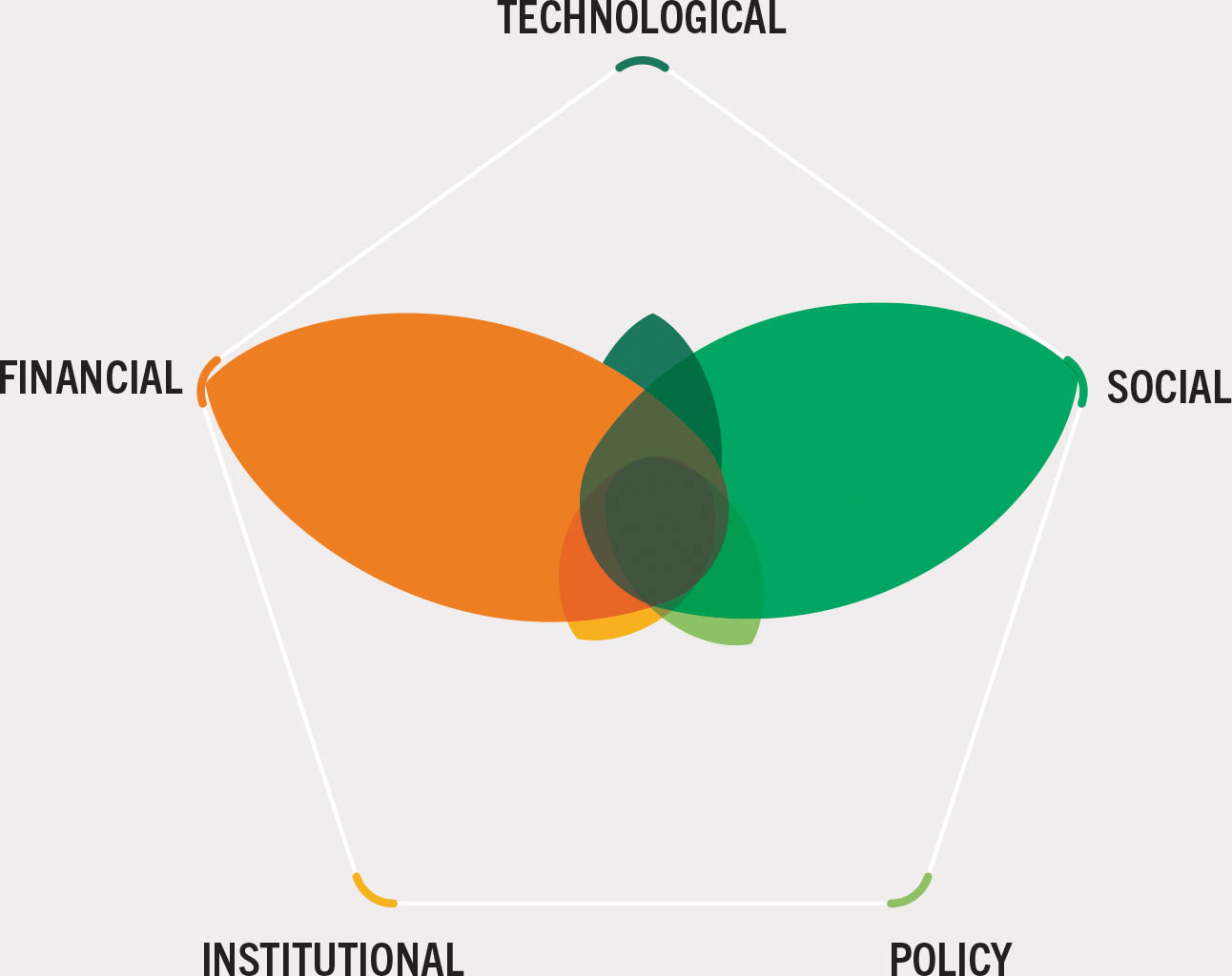
The context. Microfinance enables rural agricultural communities to access financial services that were previously out of reach and thereby to expand their operations and livelihood opportunities. In addition to providing business and value-chain opportunities, microfinance initiatives support resilience and climate adaptation and provide social services to communities.
Until recently, however, a significant segment of rural forest and farm producers in Viet Nam was underserved. In 2016, fewer than 20 percent of forest and farm producer organizations had access to loans, despite a significant forest and farm sector in which communities manage forest resources and agricultural activities. The need for lengthy business plans, which smallholder forest and farm producers lacked capacity to prepare, meant they were unable to access the initial capital investment needed to diversify or increase their incomes through longer-rotation plantations and value adding. Recognizing the role of local communities in sustainable forest management and this finance gap, the FFF231 has worked to extend microfinance services to forest and farm producers through innovative finance.
The innovation. In 2021, the FFF facilitated the development of “green funds”, building on an existing support fund for farmers that has been operational since 1996. The Viet Nam Farmers Union (VNFU) acts as the lending body for green funds and the pre-existing support fund, which operate without the requirement of collateral, thus making them accessible to small-scale producers, who often face challenges in obtaining traditional bank loans.
Green funds provide forest and farm producers with access to loans of up to USD 1 000 without lending interest. The loan amount and terms are tailored to the needs and capacities of borrowers, with a rotating loan term of around 12 months. FFF support has increased the capacity of lenders to assess these needs and raised local awareness of the services available through the organization of other meetings with local authorities and other stakeholders.
Results and impacts. Through green funds, the number of producers with access to finance has more than doubled, with 53 percent of forest and farm producer organizations supported by the FFF now able to pursue sustainable land management practices such as agroforestry and long-rotation timber cultivation, benefiting the environment and livelihoods.
Green funds have enabled a 10–30 percent increase in producer income. A producer who applied to his producer organization for a loan after recognizing the potential for further diversification and increased income through a long-term timber rotation scheme provides an example of how the mechanism works. The forest and farm producer organization, which is part of VNFU, was well-acquainted with this producer’s capabilities and could confidently assess his repayment ability, ultimately providing him with a loan to initiate the timber plantation.
The green funds mechanism is relatively new. Most loans issued to date have been to establish long-rotation timber covering more than 200 ha and for investment in diversified production and organic production under forest canopies across 56 ha.
The innovative finance approach is fostering trust in local communities, enabling income growth through diversified ventures, and addressing the unique needs of small-scale producers, who may lack support from conventional banks. Additionally, it contributes to sustainable land-use practices by enabling the integration of timber production into existing agricultural frameworks. The approach is helping strengthen cooperatives, which, for the first time, can offer retirement plans and medical insurance to their members.
Potential for scaling up. As the green funds mechanism matures, it will enable more cooperatives to expand their financial services to members. Savings associations and microfinance allow the establishment of new enterprises based on identified market gaps and provide strong opportunities for local value-chain development. They can also support climate-change adaptation and mitigation at the local level and serve as important social safety nets in communities.
Forest community finance is also being developed in other countries supported by the FFF, such as the Plurinational State of Bolivia, Ghana, Madagascar and Nepal. Notably, the approach has gained significant traction in women’s organizations, increasing gender equality in financial access. The approach, which represents the adoption and adaptation of tried and tested financial mechanisms in new contexts, has significant potential to further empower forest smallholder organizations worldwide.

© Viet Nam Farmers’ Union/FFF
Case study 14The Legal Hub: using new diagnostic tools and methodologies to catalyse legal-reform processes for sustainable wildlife management
Location: Chad, the Congo, the Democratic Republic of the Congo, Egypt, Gabon, Guyana, Madagascar, Mali, Senegal, the Sudan, Suriname, Zambia, Zimbabwe (and other countries to be added in 2024)
Partners: FAO, CIFOR–ICRAF, French Agricultural Research Centre for International Development, Wildlife Conservation Society
WEIGHTING OF INNOVATION TYPES

The context. Millions of people in the tropics and subtropics depend on wild meat for food and income. Demand is growing, particularly in urban areas, and overhunting is posing a threat to many wildlife species and increasing food insecurity for those who depend on these resources, such as Indigenous Peoples and other local communities.232 Ensuring sustainable use that both supports livelihoods and maintains wildlife populations requires a community-rights-based approach to sustainable wildlife management.af
An enabling legal framework for such an approach should reflect the diversity of interests; it might also need to recognize legal pluralism, including customary and informal justice systems (CIJSs). This is difficult to achieve, however, with many legal and regulatory systems struggling to keep pace with changing global environmental and social norms and requirements. For example, few CIJSs are recognized in statutory laws due to limited stakeholder participation in law-making. Moreover, the complexity of legal language and the chaos of certain legal systems make it difficult for the public to know the applicable rules.
Laws pertaining to wildlife management must be accessible to all. Moreover, reform efforts must be transparent, consultative and participatory if their aims are to be achieved. Previous experience, including work conducted within the framework of the European Union Forest Law Enforcement, Governance and Trade Action Plan, has shown that the effective engagement of civil-society stakeholders and local communities in law-making processes is only possible if there is access to and understanding of legal information.
The innovation. The Legal Hub, launched by FAO’s Sustainable Wildlife Management (SWM) Programme in 2021,234 compiles legal profiles of countries prepared by national experts under the guidance of the FAO Legal Office235 using SWM Programme legal diagnostic tools (Figure 9). The profiles, which are reviewed and validated by governments, are designed to improve understanding of the strengths and weaknesses of existing statutory legal frameworks. They include mapping the frameworks and identifying barriers to the implementation and enforcement of laws. In addition to addressing the difficulties of accessing and understanding existing legislation, the platform summarizes the requirements of relevant international conventions and customary norms and practices. Thus, the Legal Hub offers a centralized, user-friendly access point to legal texts across sectorsag relevant to sustainable wildlife management in 13 countries (to date), as well as in-depth descriptions of customary norms and practices.
Figure 9Types and sources of information that feed into a given legal country profile in the Legal Hub

Results and impacts. By providing stakeholders with a greater understanding of existing statutory and customary laws and regulations, together with science-based knowledge from the SWM Programme and other initiatives, the Legal Hub is helping catalyse legal-reform processes to support sustainable wildlife management. The multisectoral approach is also encouraging a One Healthah perspective in law development by examining the coherence and interrelationships of legislation across sectors as they relate to the wildlife–human–livestock–ecosystem interface. According to the principles of equity and parity proposed by the One Health High-Level Experts Panel,236 each legal domain should consider its impact on the health and well-being of all, including humans, animals, plants and ecosystems, and enable multisectoral coordinated interventions. Moreover, the Legal Hub’s focus on customary norms and practices allows it to leverage local-level rules and agreements to help translate the One Health approach into action.
The Legal Hub has been used to guide, inform or trigger the following multiple participatory national and subnational legal-reform processes:
▸ Botswana – drafting of a bill on community-based natural resource management, including widespread national consultations;
▸ Chad – drafting of the Law on Environment to reflect principles in the Convention on Wetlands (Ramsar) and African-Eurasian Migratory Waterbird Agreement;
▸ the Congo – a review of a new law on wildlife and protected areas;
▸ the Democratic Republic of the Congo – drafting of a policy on wildlife use and a potential future wildlife law as part of a multistakeholder exercise;
▸ Gabon – drafting of a national strategy on wild meat, as well as a series of legislative and regulatory reforms on community hunting and trade;
▸ Guyana – drafting of legislation on inland fisheries and aquaculture as part of a process supported by the SWM Programme and the development of food-safety regulations on wild meat;
▸ Madagascar – a revision process for Ordinance No. 60-126 on the country’s hunting, fishing and wildlife protection regime through a multistakeholder legal working group; and
▸ Zimbabwe – informing of a review of the Parks and Wildlife Act and the drafting of the relevant regulation, and also informing of the Community-Based Natural Resource Management Policy and the Communal Land and Forest Produce Act.
The Legal Hub website received nearly 20 000 visits in 2023, almost double the number in 2022 (Figure 10), of which more than 11 000 were from users in Africa. This suggests that the Legal Hub is being used increasingly to inform discussions on reforming wildlife management legislation. Moreover, the Legal Hub is playing an important and perhaps pivotal role in raising awareness among decision-makers in government.
Figure 10Number of visits to the Legal Hub in 2021, 2022 and 2023
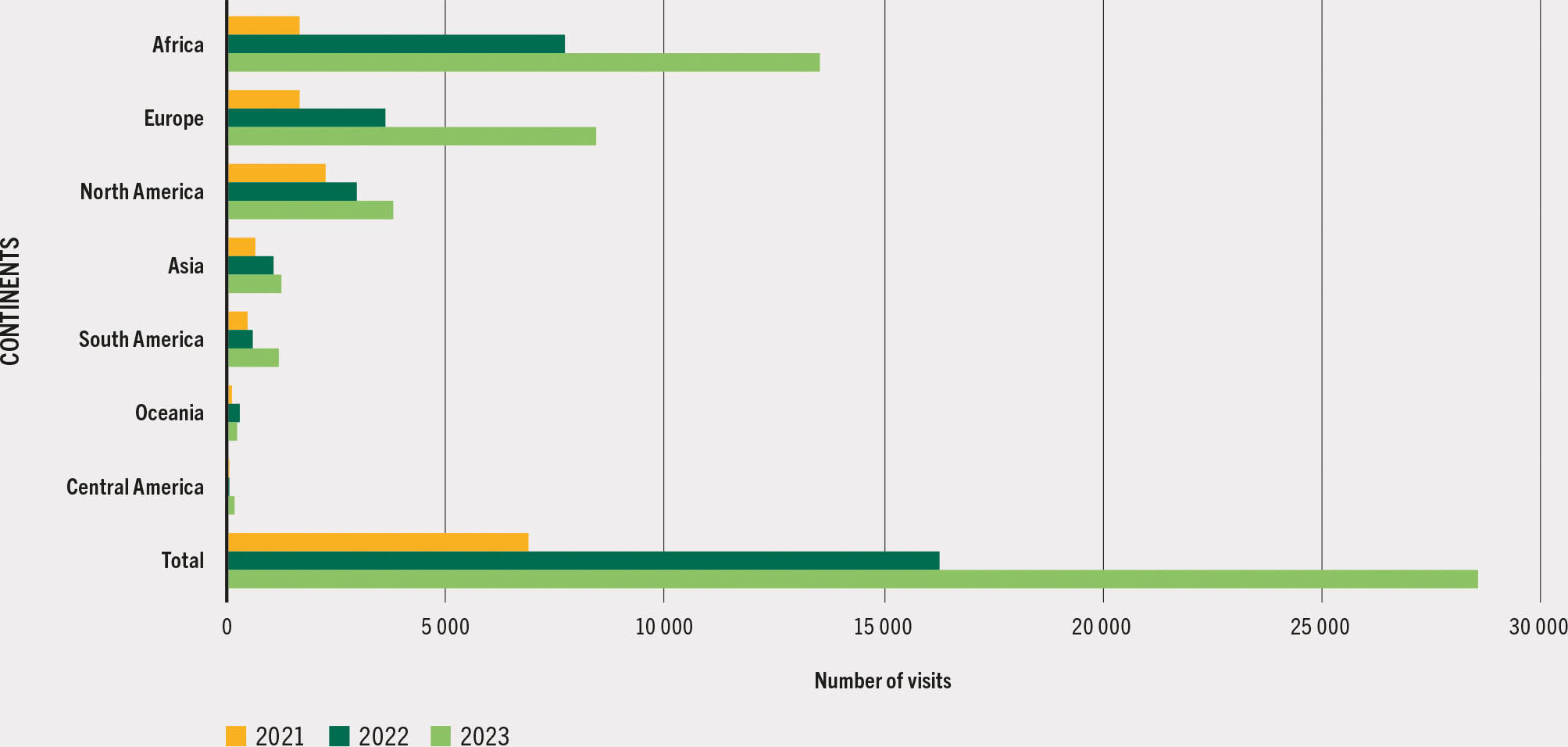
The influence exerted by the Legal Hub is illustrated by the following quote from Dr Rosalie Matondo, Minister of Forest Economy, the Congo (personal communication, 2023):
This platform allows us to have in one single place all the information from the Republic of the Congo that is related to the management of wildlife and protected areas. Hence, this platform not only allows researchers and students to find information they can use in their research work, but also allows us, the decision-makers, to see what developments we have made within the legislation and regulations framework for the management of wildlife and protected areas. And it also allows us to question ourselves and propose the reforms that we have talked about, because we must always look back in order to move forward.
The cross-sectoral nature of the Legal Hub is enabling dialogue among departments and ministries in different sectors, which historically have had limited interactions, thus helping overcome institutional silos.
Potential for scaling up. The Legal Hub has expanded rapidly since 2021, with the continuous addition of new information and participating countries. Its approach and tools can be replicated in other countries and regions and used to engage national and local actors in informed multistakeholder dialogues on policy and legal reforms. Factsheets and educational materials and modules are being developed to help reach and inform all stakeholders.
Although the platform has focused to date on sectors relevant to sustainable wildlife management, its scope will be expanded to include other aspects of natural resource management, such as land conversion, forests, pesticides and biotechnology. The hub approach will further accommodate the guiding principles of some key international legal instruments and initiatives of international programmes and organizations to better reflect new agendas, as well as the SDGs. The members of the Collaborative Partnership on Sustainable Wildlife Management237 and other external partners have agreed to participate in a review.
Case study 15Harnessing digital technologies to improve the efficiency of timber-tracking and promote sustainable supply chains
Location: Guatemala
Partners: Instituto Nacional de Bosques (Guatemala), International Tropical Timber Organization
WEIGHTING OF INNOVATION TYPES

The context. Obtaining accurate estimates of log volumes in transportation is important for sustainable forest management and trade – yet the conventional measurement method is time-consuming, inefficient and involves high operational costs. For example, measuring log volume typically requires measuring the faces of all visible logs in the transported stack to calculate the “stacking factor” – that is, the ratio between the total volume of stacked wood and the volume of solid wood.
The Instituto Nacional de Bosques (National Forest Institute – INAB) of Guatemala is working to encourage legal and sustainable forest value chains and advance sustainable forest management by improving policy frameworks, statistics and timber-tracking systems. As part of this work, the development of faster and more accurate methods for assessing the volume of logs and other wood products in transit was identified as a priority need.
The innovation. A project funded by the International Tropical Timber Organization has developed and implemented several mechanisms to improve traceability in forest production chains in Guatemala. One of these is a log-scaling manual, Guía Práctica para la Cubicación de Productos Forestales (“Practical Guide to Forest Product Scaling”), which covers logs and other wood products (woodfuel, offcuts and sawnwood) that are traded or transported in Guatemala. The project team recruited software experts, who, working closely with field staff, developed a smartphone app using the methodology, products and formulas set out in the log-scaling manual to calculate log volumes requiring only photographs and a few simple measurements.
The app, called Cubicación de Productos Forestales (“Scaling of Forest Products”), known as CUBIFOR,ai is simple to use because it requires only a photograph of the stack of logs (or other wood product), either on the truck or in the mill yard or other location, plus the average width and length of the stack, to estimate volume. The app recognizes each log face, calculates the average diameter and stacking factor, and generates a report with the resultant scaled volumes, which can be downloaded in Excel and PDF formats. The app also enables the scaling of logs for products such as sawnwood, rectangular boards, round billets, sawdust, chips, fuelwood, wood pieces and charcoal.
Results and impacts. The app is helping advance sustainable forest management and strengthen the capacity of forest companies in Guatemala to control their inventories while also improving the efficiency of activities requiring the quantification of timber volumes. This has the benefit of boosting legal and sustainable wood supply chains and enhancing competitiveness by reducing the time and cost of obtaining authorizations from government authorities. Officials at forest checkpoints now have an efficient, cost-effective means for confirming the details on bills of lading and other shipping documents accompanying wood in transit, helping ensure legality and meet administrative requirements.
Mills that have been using CUBIFOR are reporting that it is helping them in controlling, tracking and measuring wood shipments. INAB is still rolling out the app for field use, which has clear potential to assist it and other authorities in monitoring and controlling forest operations and thereby combating illegal logging and illegal timber trade.
Potential for scaling up. CUBIFOR can be replicated in other countries in the tropics, thereby assisting companies to improve their systems for controlling, tracking and measuring wood shipments and helping authorities combat illegal logging and illegal timber trade.
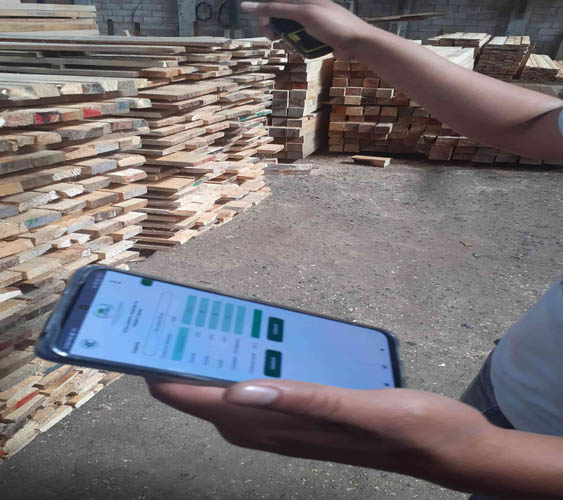
© Japan Forestry Agency/A. Tabata
Case study 16Improving connectivity along timber supply chains to reduce waste and increase the viability of sustainable forest management
Location: Brazil, Guyana, Panama, Peru
Partners: Naturally Durable Inc., FAO
WEIGHTING OF INNOVATION TYPES

The context. The increased use of engineered wood products in the construction sector has the potential to deliver climate-change mitigation and adaptation benefits. As indicated in Chapter 2, the substitution of wood-based products for non-renewable materials is likely to see global demand for industrial roundwood increase considerably by 2050, including in the construction sector. The international consumer market practice of purchasing larger dimensions and longer lengths of timber, however, generates significant wood fibre waste. Additionally, the high cost of wooden buildings compared with other construction materials is often mentioned as a potential barrier to wider use.238
Improving production and consumption efficiencies for tropical wood,aj including by reducing fibre waste and costs, will be important for meeting increased wood demand and ensuring that wood remains an attractive material for construction. Modern modular approaches to construction have brought about significant improvements in efficiency and the optimal use of high-value species. Most design concepts can be modularized to enable the use of lower-value species for hidden parts such as brackets and cleats. Among other things, this requires forest product purchase orders for smaller pieces and underused species. Collaboration along supply chains to improve understanding of the precise requirements of specifiers, architects and construction managers will enable sawmills to provide customized, efficient solutions and provide opportunities for sharing information, such as on lesser-used species and opportunities for increasing their more effective use, thereby reducing pressure on species in high demand.
The innovation. The timber trading company Naturally Durable Inc. instigated a novel approach to collaboration along timber supply chains by seeking to apply wood-waste-reduction strategies at sawmills in Forest Stewardship Council-certified forests in Brazil, Guyana, Panama and Peru. The company saw an opportunity to reduce costs for clients (and therefore boost their competitiveness) while using lesser-used species by applying precise specifications. This involved establishing formalized collaborative relationships with stakeholders along supply chains to encourage “precisely specified wood purchases”. The company promoted greater coordination among harvesters, sawmills, traders and architectural millwork companies to enhance integration during the design, manufacturing and installation phases of construction projects. Practically, this involved collaboration and co-development across various stages of the process, including the drafting of architectural and shop drawings and the creation of purchase orders, shipping documents and invoices.
The impact. Naturally Durable Inc.’s innovative collaborative approach has enabled the communication of piece-specific purchase orders to remote forest sawmill production managers, which has improved wood-use rates by enabling the economically viable use of smaller logs and shorter pieces.
The Commonwealth Pier Revitalization Project239 – a major ocean-pier revitalization project in Boston, United States of America – provides an example of the impact of piece-size specification and enhanced collaboration along the value chain. The installation contractors specified 29 532 m2 of decking (amounting to five ocean-freight containers). In 2021, Naturally Durable Inc. instructed two Forest Stewardship Council-certified decking manufacturers to produce all lengths in increments of 31 cm. In 2022, sawmill piece-count records were matched to a spreadsheet analysis of the lengths needed at all project locations. Location-specific drawings determined the exact lengths to be used during installation and a specific section of the project was able to use only short pieces (2–5 feet lengths, or about 61–152 cm). Installation crews were provided with detailed shop drawings. Using this approach, the actual installation required only 24 358 m2 of decking, thus achieving a 17.5 percent gain in wood-use efficiency. The sawmill earned an additional EUR 9 300 (about USD 9 800) through the sale of short pieces, the project contractors saved approximately USD 86 000, and the installation crew reduced the time it needed to install the decking. The gain in efficiency also cut the shipped volume by 37 m3, which reduced transport-related greenhouse-gas emissions.
Opportunities for scaling up. Collaboration among architects, construction managers and sawmills can result in wood-use efficiency gains at any scale. The method can be applied to all architect-specified wood products in built environments globally when embedded in design and construction management software.
Dissemination of the precisely-specified-wood-purchase approach requires management decisions seeking to enhance the economic and environmental sustainability of wood use. It demands the appropriate education of architects and engineers to ensure wide understanding of the use of wood as a construction material and specifications focused on wood properties rather than species. It also requires close communication along supply chains and between project developers and forest managers and traders. The dissemination and use of software and educational programmes is crucial but underdeveloped.

© Paul Fuge
Case study 17Applying new wood-processing technologies to promote a bioeconomy and enhance earthquake resilience
Location: Slovenia, United States of America
Partners: Institute for Civil Engineering (Slovenia); National Science Foundation (United States of America), Colorado School of Mines, University of Nevada, Lehigh University, Washington State University, LEVER Architecture, Englekirk Structural Engineering Center at the University of California, Oregon State University, Forest Products Laboratory, United States Forest Service
WEIGHTING OF INNOVATION TYPES
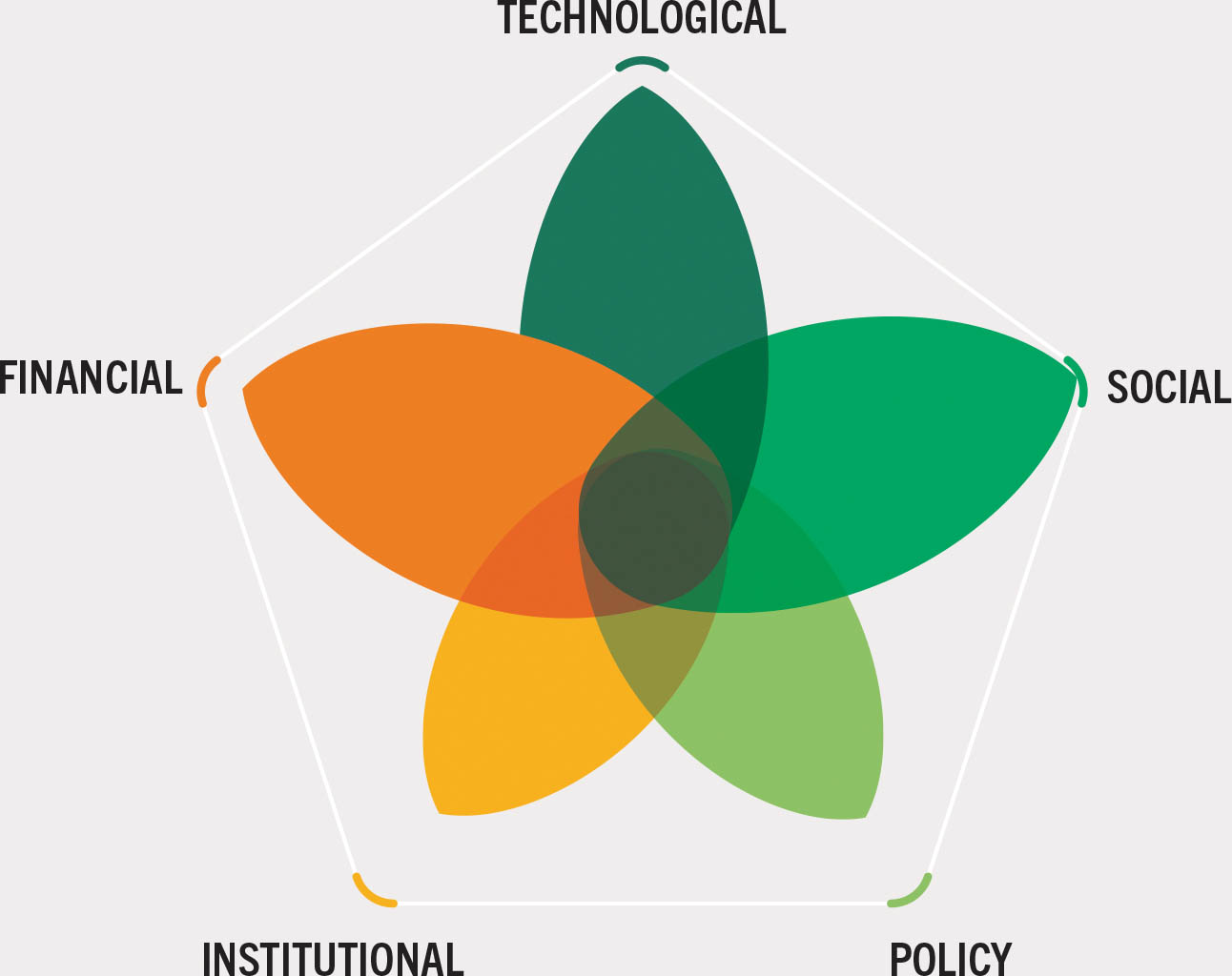
The context. Seismic events are common in many parts of the world, and they can cause significant injury and loss of life due to building collapse. This is a problem shared by countries transitioning from rural living to urbanization and by already highly urbanized countries with older, more traditional urban structures not designed for seismic events.240 It is estimated that the population in global earthquake-prone areas such as the Pacific Rim and the Mediterranean–Asia belt will increase threefold by 2050, to almost 600 million people.241 The building of new seismically resilient buildings and the upgrading of existing urban structures are essential. Building collapse is commonly a result of inadequate design and poor building practice. Therefore, there is a need to share best-practice engineering, design and building methods between countries and regions.240
The innovation. Mass-timber technologies are offering alternatives to reinforced-concrete building systems. One of these, CLT, was launched commercially in the 1990s and now has an annual global production volume of about 2 million m3 (valued at almost USD 1.3 billion in 2022). A compound annual growth rate of production of up to 14 percent is expected for the next decade.242 The use of mass timber in construction is gaining momentum globally due to its low carbon impact, with traditional concrete and steel construction each contributing 8 percent or more of global carbon-dioxide emissions.243 An important attribute of wood when used in construction is its low weight-to-strength ratio combined with its ductility (the ability to deform and bend before it breaks).244 Overall, mass timber has the potential to increase the resistance of tall buildings to earthquakes.
Results and impacts. The NHERI Tallwood project led by the Colorado School of Mines (funded by the National Science Foundation) designed and built a ten-storey mass-timber tower at the University of California, San Diego, United States of America, on a giant external shaking table. The building was subjected to multiple earthquake cycles of up to 7.7 on the Richter scale.245 Special attention was applied to the jointing methods used between floor panels, columns and sheer walls and non-structural components such as facades, which provided the structure with additional flexibility during simulated earthquakes, thereby ensuring that the joints didn’t break, the building didn’t collapse, and non-structural elements remained attached.246 The test showed that a ten-storey timber tower using mass timber and a flexible metal jointing system could withstand once-in-a-generation-scale earthquakes with no damage; moreover, the building would be fully usable afterwards.245
At the Institute for Civil Engineering in Ljubljana, Slovenia, CLT panels were used to simulate structural reinforcement of older concrete-structure buildings built before tighter seismic building codes came into effect.245 The project tested the impact of applying CLT panels to the outside sheer walls of a two-storey concrete building. First, a concrete post-and-beam and masonry wall and floor structure was built on a shaking table, and various scales of seismic shaking were applied to measure performance and the level of swaying and damage to the structure and connections. Then, a similar structure was built and CLT elements fastened to the outside of the masonry infill walls, and the same seismic testing was carried out. The results showed that the addition of CLT external bracing panels provided a 34 percent increase in resistance and a 25 percent increase in displacement capacity compared with the non-CLT-reinforced concrete/masonry structure. Thus, the structural reinforcement of older concrete buildings with mass timber could be a viable way of upgrading existing concrete buildings, potentially including buildings already exposed to seismic damage.247
The two projects demonstrated that the use of mass-timber building elements and systems for both new builds and renovation in earthquake-prone regions could be a technically viable method of construction and renovation (the study didn’t carry out an economic viability assessment). This could be significant for regions where increasing urbanization offers an opportunity to adopt best-practice mass-timber construction design and connection systems through knowledge transfer. The potential to maintain existing concrete/masonry structures and strengthen walls with mass timber is an option that would be much less disruptive than replacing existing buildings that lack adequate seismic resistance. In addition, several projects have shown that mass-timber elements can be used to increase the height and occupancy of existing concrete buildings, which can increase the value of the real estate and provide additional, relatively low-cost housing and office space. Recent overbuild upgrades using mass timber include those at 55 Southbank Boulevard, Melbourne, Australia, and 80 M Street SE, Washington, DC, United States of America, in which the light weight, strength and ductility of mass timber have enabled the extension of commercial buildings upwards for mixed-purpose usage.248, 249
Opportunities for scaling up. A challenge for projects using mass timber is the construction of full-scale buildings, which is time-consuming and costly and requires strong collaboration. The NHERI Tallwood project deployed expertise from several universities in Japan and the United States of America and engaged strongly with industrial producers of mass timber and connector systems. There is an opportunity for the transfer of evidence-based knowledge and best-practice design to regions where urbanization is increasing in seismically prone areas. The potential to use wood as a reinforcement material in existing concrete structures could cost-effectively increase their seismic resistance and even increase building height and thermal performance. Woodrise and the World Conference on Timber Engineering are good platforms for increasing awareness of these technologies.
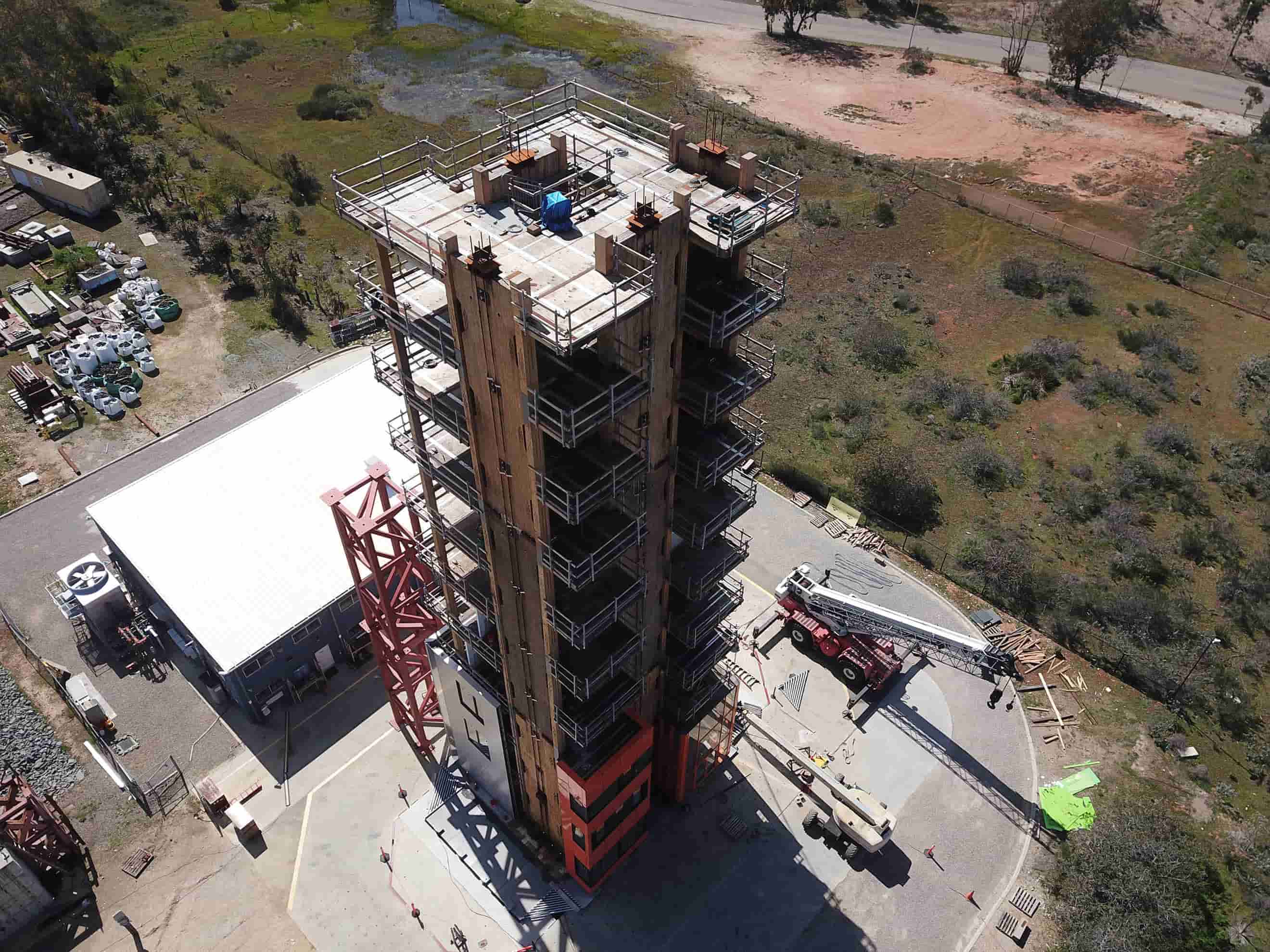
© Colorado School of Mines/Shiling Pei
Case study 18Enabling farmer-led innovation in sustainable forest and agricultural production through farmer field schools
Location: Global
Partners: FAO, Global Farmer Field School Platform
WEIGHTING OF INNOVATION TYPES

The context. Today’s agrifood systems pose significant challenges due to the detrimental impacts of unsustainable business-as-usual practices, which are contributing to climate change and natural resource degradation,250 and there is an urgent need for their transformation. A crucial step for this is to address the challenges faced by small-scale producers and family farmers. Family-run farms constitute about 90 percent of the 608 million farms globally; of these, 84 percent are smallholder farms operating on 2 ha or less. Despite using only 12 percent of total agricultural land, they contribute around 35 percent of the world’s food supply.251 The impact of family and small-scale farming extends beyond livelihoods, directly shaping ecosystems through land management practices. Yet capacity development, learning and education programmes for smallholders are lagging in many countries.
The innovation. Over the past three decades, FFSs have emerged as a highly effective capacity-development approach that enables rural people to innovate with clarity and purpose and fosters social skills crucial for rural transformation. By centring learning and innovation around farmers, FFSs contribute to individual, household and community empowerment while aiding ecosystem restoration. The discovery–learning approach in FFSs is particularly beneficial because it facilitates learning and innovation in sustainable agriculture, food systems, forestry, livestock, integrated pest management, fisheries, aquaculture, value chains and market connections.252 The innovative approach, grounded in an enhanced understanding of agroecological dynamics and farmer-led experimentation, has enabled tens of millions of farmers worldwide to sustain or enhance productivity while reducing their reliance on external inputs.
Results and impacts. The forestry applications of FFSs have proven highly impactful by fostering ecological literacy and unleashing creative problem-solving capacities. FFSs have played a crucial role in cultivating “response – ability”, which is the capacity of small-scale producers to creatively address challenges in agriculture, food production and natural resource management through enhanced knowledge and technological development. Experiences with FFSs in Africa, Asia and the Americas show the significant potential of the approach in inclusively bolstering the restorative capabilities of rural communities and advancing sustainable small-scale agriculture and forestry production.253
FFSs have empowered family farmers globally to acquire the knowledge, skills and social organization necessary for regenerative natural resource stewardship in small-scale and family farming. It has been estimated that, over the past 30 years, about 20 million people from 119 countries have graduated from FFSs.250 In addition to addressing practical issues, FFSs foster self-esteem, unlock creativity and promote social organization.254
An FAO stocktake identified forest- and tree-related FFS applications involving over 200 000 producers in more than 20 countries across Africa, Asia and the Americas, addressing challenges in, for example, fruit-tree production, woodlots, community forestry, soil and water management, and protected areas.255 In Mozambique, the PROMOVE Agribiz project (Case study 12) is supporting 22 000 small-scale farmers in advancing agroforestry production and business incubation and to access carbon credits for their agroforestry efforts.
A curriculum-based participatory approach germane to FFSs is that of Farmer Business Schools (FBSs). FAO developed the FBS concept to strengthen the capacities of service providers and farmers in transitioning from subsistence to market-oriented farming and “farming as a business”. The FBS curriculum is designed to guide farmers over the full farm business cycle, with basic concepts and exercises in business planning, farm management and financial literacy. The FBS approach has been implemented across Asia, Africa and the Near East since 2005 in various settings, including fragile contexts at the humanitarian and development nexus. Hundreds of FBSs have benefited tens of thousands of men and women farmers in enterprises spanning crops, horticulture and agri-processing, catering for local consumption and export.
Potential for scaling up. Growing demand for people-centred and environmentally sound rural development positions FFSs at the forefront of the transition toward more sustainable agriculture and forestry. FFSs involve building partnerships to support small-scale producers; applying insights from people-centred development to forestry and agroforestry; promoting inclusion and social organization at various levels; investing in synergies between agriculture and forestry training; and financing business incubation for income opportunities linked to local-level ecosystem restoration initiatives.
In India, the Government of Andhra Pradesh State, Rythu Sadhikara Samstha (a state government institution) and FAO are implementing the Andhra Pradesh State Community Managed Natural Farming programme, which is adapting the FFS concept to natural farming and soil health regeneration through agroforestry and intensive polycropping. The aim of the programme is to enable the transition of 6 million agricultural producers to regenerative agriculture by 2030.256 CARE International plans to expand farmer field and business schools to 35 countries, support 25 million producers, engage farmers in global markets via a certification model, and promote government adoption.257 FFSs and FBSs can also play significant roles in scaling up action on ecosystem restoration by developing the capacity of smallholders and producer organizations to undertake local restoration initiatives, for example in the context of the African Forest Landscape Restoration Initiative (AFR100).ak
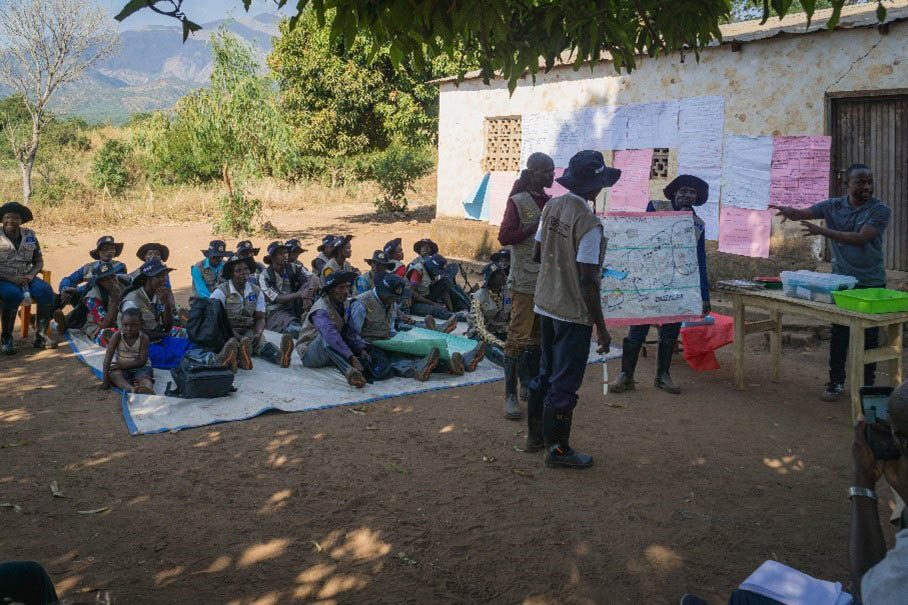
© FAO/José Vilialdo Diaz Diaz

